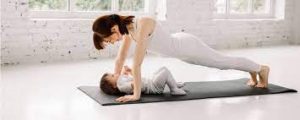postnatal Pilates help with pelvic floor rehabilitation
Pregnancy and childbirth are a beautiful thing, but they do take a toll on a woman’s body. The pelvic floor muscles (the ones that stop you peeing yourself) are put under a lot of stress during pregnancy and labour, leaving them weak. This can lead to issues like stress incontinence and prolapse, as well as pain and numbness in the lower back and hips. Fortunately, Pilates is a safe and effective way to reactivate these muscles and help them recover post partum.
When you’re first getting up and about again, it can be difficult to know where to start with exercise. There’s a whole new human in your life who is entirely dependent on you, and your priority is going to be caring for them. However, there will come a time when you’re ready and able to start moving again, and it’s important that you’re careful in what exercises you do.
postnatal Pilates East Sheen is specifically designed to be low impact and to support the core/pelvic floor muscles to re-activate and strengthen. It’s also a great alternative to higher impact exercises such as running or gym classes, which can be too intense on the core and pelvic floor following a C-section.

Can postnatal Pilates help with pelvic floor rehabilitation?
During pregnancy the abdominal muscles stretch to accommodate the baby, and sometimes this can create an issue known as diastasis recti (a gap or separation in the abs). In our postnatal classes we focus on the deep abdominals, which helps close the gap and prevents it from worsening.
The exercises are gentle but powerful, and get various other muscles in the body involved too, which is a real bonus. This can help give you a more toned and balanced physique after birth, and also improves your posture by helping you be more aware of how you are holding yourself, especially when carrying a baby around!
We also work on mobilising stiff parts of the body, which can help to ease aches and pains that are often brought on by sitting for long periods of time (as you’re feeding, changing nappies or carrying your baby). It can help reduce the tension in your neck and shoulders, and strengthens your spine.
Our postnatal classes on the reformer are an accelerated way to help safely rebuild strength and stability in the postnatal body. It’s important to do reformer Pilates with a trained postnatal instructor who is familiar with the unique needs of the postnatal body. Joseph Pilates spoke of the transverse abdominis being like a gladiator belt to corset your midsection and give you power in your movement. This is a fantastic idea for postnatal clients, and we encourage our students to engage these muscles as much as possible.
Of course, doing Pilates on the mat at home is still an effective workout. There are plenty of online tutorials available, and a quick 10 or 15 minute session at home can really make a difference. A quick home routine can even be done while you’re waiting for your little one to sleep!